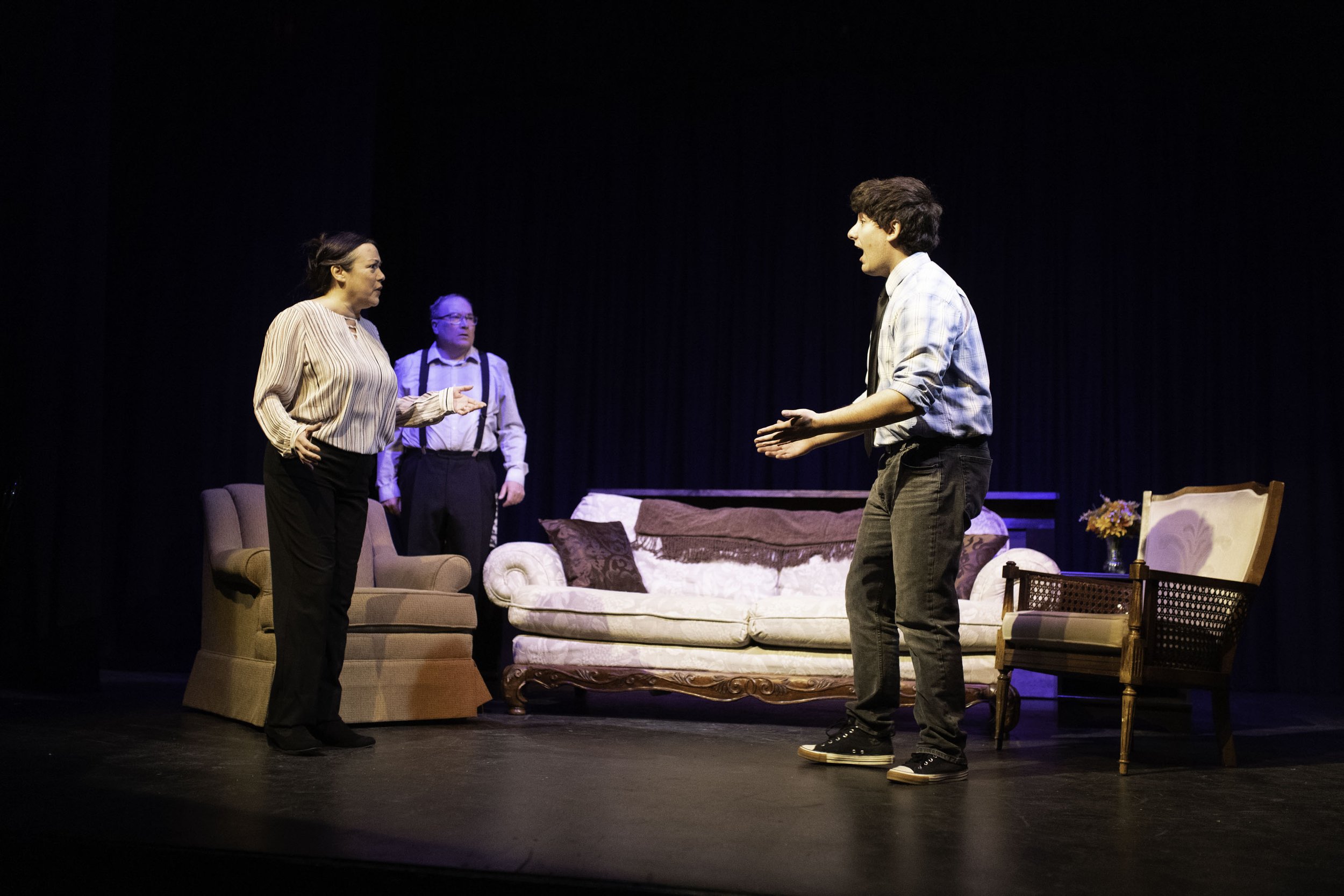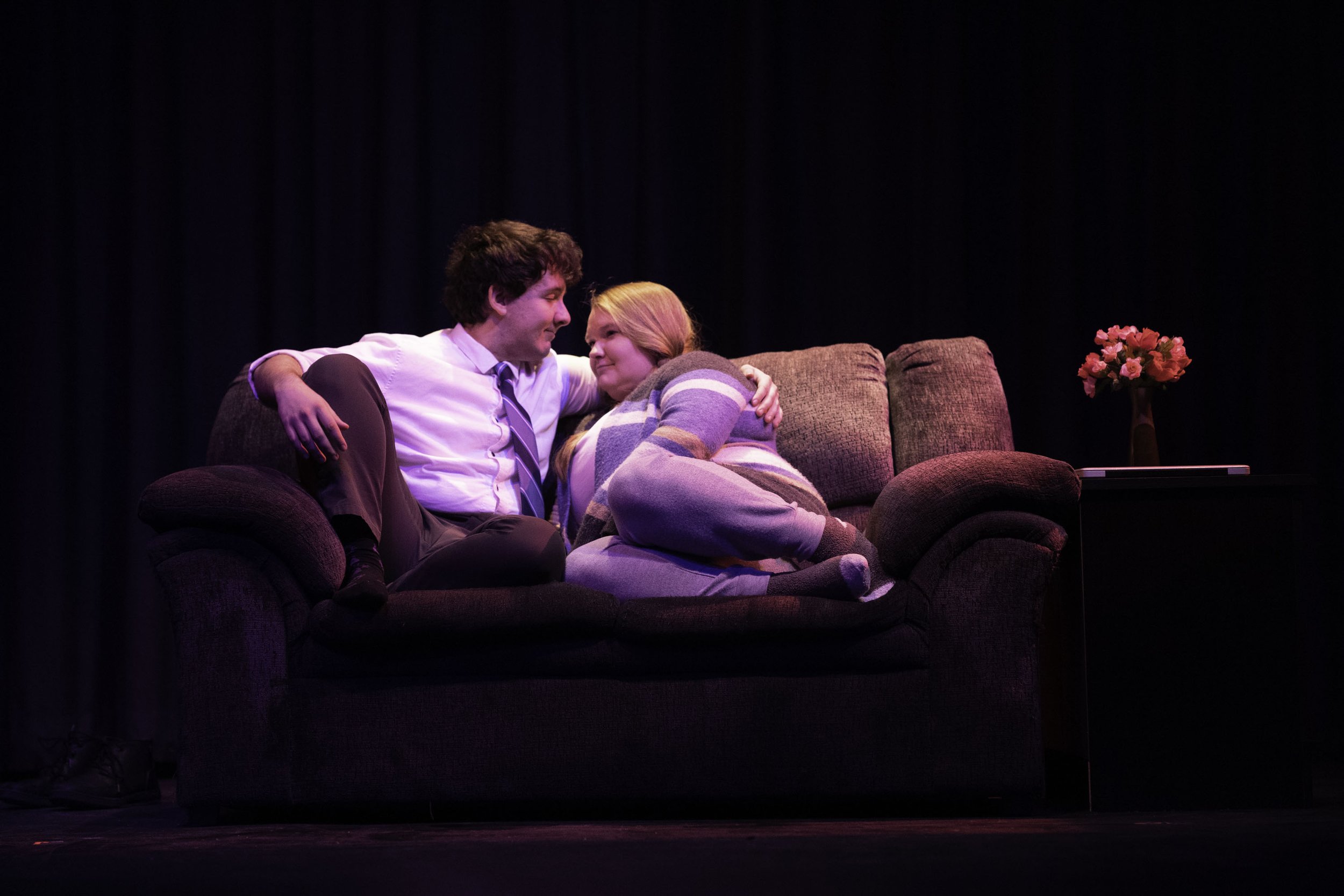Lighting Design
During the first meeting I had with the director, we both agreed that the primary strengths of The Siegel was the dialogue- it’s quick, witty, and more than a little irreverent. To that end, to the focus of the show was intended to be upon the cast- lighting would serve as a strictly supplementary role, providing realistic environments in which the cast was to live.
Design Concepts
One of the major considerations for the Lighting Design was the lack of heavy scene elements on the set- consisting of furniture and some soft-good legs, small stage space available and restricted budget for scenic elements meant that lighting was the prime method by which we would establish the scenes as being separate from each other.
While the majority of the show is in neutral, realistic interior lighting to represent the homes of the cast, I used more ‘theatrical’ looks during scenes where mood lighting was more appropriate- the interior of a bar, of a young couple’s apartment, etc.
My research reflects these principles- when looking for my inspiration for each scene, I wanted each space to feel like an extension of the character’s personality. Ron and Debbie are established, both professionally and as a couple, and so their home should be too. Alice and Nelson are on shaky grounds, and so their ‘feel’ was rather more austere in nature- colder and less whole.
Paperwork
-
Two of the more challenging aspects of the design were a short turnaround time in space, and the relatively fixed-positions of the available cable paths. While either alone would not be too much of an inconvenience, combined it meant that the plot of the show needed to be designed in such a manner as to maximize the current plot, moving, refocusing and replacing instruments as required to create the localized sections of the stage needed to bring the audience to each location.
-
In the end, the plot relied upon a combination of a frontal wash system used to add dim color to the areas of the stage not in focus, and several systems dedicated to each location in turn. This combination of systems served to both provide suitable lighting and unique moments onstage, as well as effectively using the limited resources available to me in time and manpower, requiring little in the way of a full strip and rehang of the grid.























